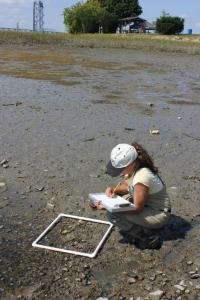Funding:
Piscataqua Regional Estuaries Partnership / EPA; UNH Sea Grant
Description:
As excess nutrients enter the Great Bay Estuary, a variety of nuisance plants can bloom and lead to fundamental changes in the ecology of the estuary – causing loss of habitat critical for support of valuable plants and animals. One type of plant, benthic macroalgae or seaweed, can bloom with excess nutrients and lead to displacement of traditional and native species by invasive, exotic forms.
With the help of expert phycologist Art Mathieson, David Burdick is piloting a seaweed monitoring program to establish current conditions and better understand human-caused and natural variation in seaweed biomass around the estuary.
Student Involvment:
Mark Kotowski (UG)
Elisabeth Cianciola (MS)


